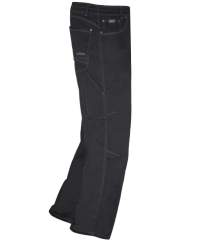Historically, in English speaking countries anyway, there has been a gradual covering over of the idea that sex is dangerous. Thus, most readers are probably unaware that 8 out of 10 mating dances also happen to be martial arts. Nearly all mating dances were developed by people who had to deal with levels of violence that are frankly unimaginable for most people today.
I first heard the idea that sex is dangerous expressed in an essay by Pat Califia* in about 1992. The essay was in the form of a photocopy that a friend handed to me, this was one of the ways people used to spread ideas before the internet. In the essay Pat Califia methodically went over all the ways sex has been dangerous from STD's to Romeo and Juliet.
Historically sex has been dangerous in nearly every culture, but that hasn’t stopped most people from trying it, and at times (to understate the case) enjoying it. (Since I am a contrarian, even to myself, readers may find this essay interesting as a counter point, “It’s Only a Penis.”)
One of the most brilliant and culturally transcendent ideas invented to make sex a little safer is the mating dance. Saying that mating dances are an idea is somewhat problematic in that a great many animals do them too, peacocks come quickly to mind. But humans have certainly attached all manner of rituals, protocols, visions, designs and ancillary purposes to the “idea” of learning and performing mating dances.
People are often reluctant to communicate verbally about their sexual needs. Speaking broadly across cultural realms, the range of what is considered sexual communication is mind bogglingly diverse. What is thought of as sacred and what is taboo, what is ideal, and what is frightening, are literally all over the map.
Dances have historically and evolutionarily played an important role in courting. Dances were used to help teach adolescents how to behave around the opposite sex and how to communicate. Men have a tendency to fight over women, and women often pick their mates base on the outcomes of these violent performances. Women also compete over men, although they come to blows less often.
There is also a historic developmental link between mating dances and competitive dances that display martial prowess in front of a king. This happened because part of the purpose of these dances was to honor the king and so when communities wanted to honor a woman coming of age they would do similar dances for them.
We could go deeper into the many cultural purposes of mating dances, there is an enormous literature in socio-cultural anthropology to that effect. But our subject is martial arts.
Mating dances usually teach elements of competitive social violence and asocial violence. Even rather stately mating dances like the Waltz teach one a lot about taking control of centrical momentum, which is one of the master keys for reversing the odds in a surprise attack. Today when most people think of the waltz they are imagining staged prudery and pomp, that is not what I’m talking about. I’m talking about the Waltz as a folk art. I’m talking about spinning around and around for hours on end by the light of the moon on ever increasing amounts of alcohol, and then stumbling home in the dark.
Italian country dance is a great example of a martial art hidden inside of a social dance. A great many of the Italian country dances are knife fighting games. We can find similar examples in countless other cultures.
Many mating dances have extraordinary footwork which is directly transferable to weapons fighting, as well as drop steps for power generation. Many mating dances have well developed elbow strikes, or hands raised to keep the spray of blood out of ones eyes.
Nearly all mating dances were developed by people who had to deal with levels of violence that are frankly unimaginable for most people today. These dances teach people to fight in the thrall of the heart fluttering hormones of sexual passion, fear, and other mind altering conditions. As practical martial arts they are far more realistic than most “traditional” or “pure” martial arts when it comes to understanding how social violence happens and how asocial predators attack.
Samba is a mating dance from Brazil that has it all. It has superb defenses for attacks from behind, awesome footwork, fantastic body slam combinations, elbow strikes in all directions, vital target evasion, tripping, head attacks, and brilliant escapes.
Watch this whole video but especially check out the guy in blue pants at the 4:03 minute mark. Now imagine having someone attack you from behind and responding with that movement.
The inspiration for this post came from the fact that I was roped into teaching a dance class based on the song ‘What Does the Fox Say?’ After watching the videos and listing to the music for a few minutes I realized it was a Samba, so I went in and taught Samba to the kids. I had extraordinarily good training in Samba from an important dance teacher of mine named Alicia Pierce. Teaching the class to kids got me exploring Samba as a martial art and I was blown away by how effective it is.
No dance is usable as a martial art unless one conditions responses in a martial way. That takes some time, but not more than about 40 hours. The dance itself takes a lot longer to learn. Samba is a highly functional and practical self-defense system, but it has to be re-focused to that purpose.
A key concept in self-defense is the idea that when we encounter asocial violence it is usually a surprise and a new experience which causes us to freeze. So one of the most important skills to develop is breaking the freeze. The current convention is to teach students to do a single action like shouting or moving, or a single structurally solid martial technique like the S.P.E.A.R. or Dracula’s Cape. And because under extreme stress we might freeze again or deceive ourselves by imaging we just moved when in fact we were still frozen, we want to condition ourselves to do the same action twice, or to do two structurally related actions one after the other.
But I’ve been doing some experiments and I’m nearly convinced that busting out a sudden dance pattern is a better way to break the freeze than the standard counter assault stances. If you have mastered a fast dance pattern which was designed to deal with an attack from behind, I suspect that is a superior way to break the freeze and neutralize the threat.
The term for the basic dance step in Samba is called ginga, which is the same name for the basic stepping pattern used in Capoeira, even thought these are technically different steps. The term probably referred to the action of a sweep-oar moving back and forth propelling a boat forward from the stern of a river boat, but in practice ginga means something much more profound. It means to have mojo, to have cashé, to have hidden power. It means to have a twisted-up disambiguated poly-rythmic body. It means being in more than one place at the same time. It is a feeling. It is a performance of other worldly access.
A friend of mine ran a theater program in a Brazillian barrio. One of his comments has stuck with me. He said Brazilian kids don't wear clothes like other kids, they move their bodies around inside of them.
I was recently watching a bunch of Lindy-Hop dancers, and they all had great technical skill, some of it quite impressive to watch. But it just looked wrong to me, they didn’t have swing. Swing is a word like ginga that refers to the African traditions of tricknology. Lindy-hop was one of the first cross-over dances, one of the first African-American dances that White people started doing. But despite being ‘good’ dancers, more often than not, they didn’t get it. That is the origin of the jazz standard, ‘It don’t mean a thing if it ain’t got that swing!”
Take it away Ella:
Here is a link to the Lindy-Hop, it is a 15 minutes video and there are some great moves by many of the performing couples, but only the first couple has some swing. Can you see it?
So back to martial arts. Awesome mating dances have that swing feeling, or ginga or whatever they call it locally. It is the juice a person needs to make their dance into a martial art. It isn’t a rhythmic pattern or a dance combination, it is a feeling of otherworldly connection, a type of access, an ability to come un-hinged.
It is also one of the sexiest things in the world.
*Pat Califia used to be a woman but she has now swung over to being a man.




